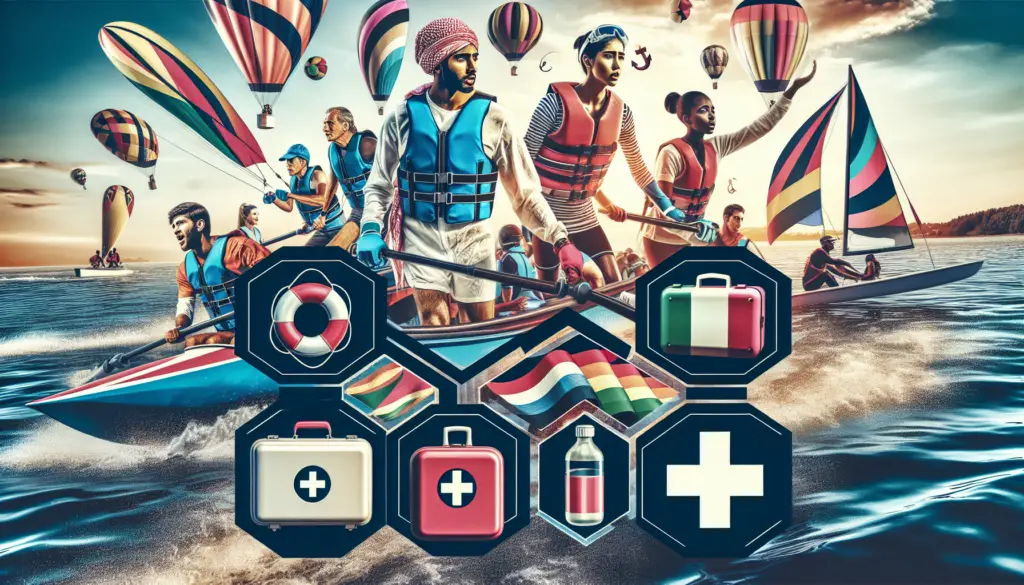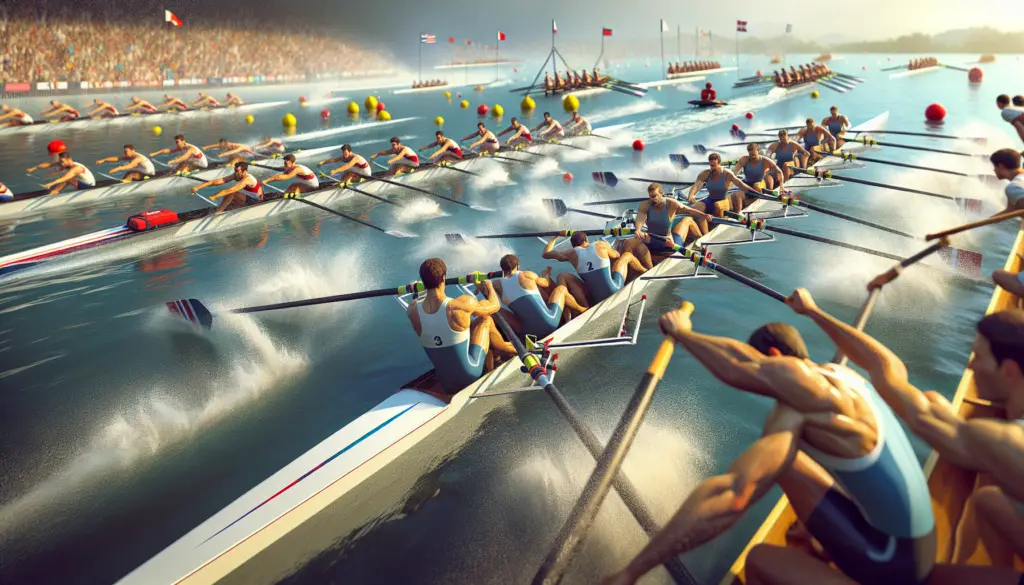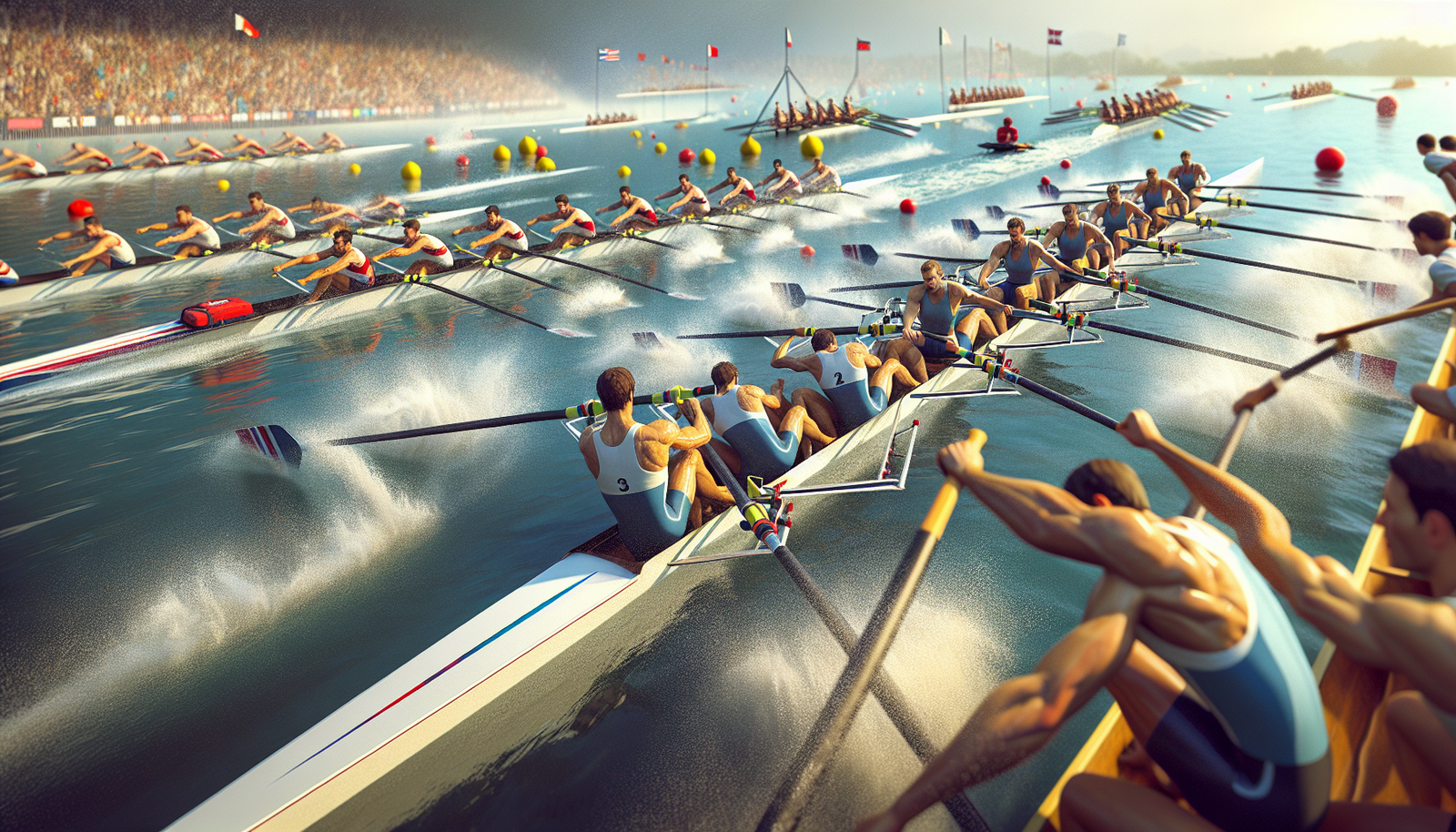Unfolding the metaphorical sails of knowledge, the compelling currents of “Boating Safety Tips for Sailing Regattas” promise to navigate you through an ocean of indispensable advice. With the spirit of adventure in every ripple and challenge mirrored in towering waves, the infinite blue demands respect and preparedness. In this text, you’re invited to soak in readily actionable tips and expert techniques that ensure not only victory during prestigious regattas, but more importantly, your safety. From securing your life jacket to understanding the language of the lighthouse, every line in this sea of wisdom could mean the difference between being a seasoned sailor and an unfortunate castaway. Hold tight, as the tide of this enlightening journey pulls you closer to mastering your boating safety skills.

Understanding the Basics of Sailing Regulations
Understanding the key underlying principles of sailing regulations is crucial for any sailing enthusiast. These guidelines ensure the safety and organization of sailing practices, making it a reliable and enjoyable hobby or profession for all.
Local Sailing Regulations
You must familiarize yourself with your local sailing regulations. These will guide your sailing conduct and responsibilities in your area. The rules could cover anything from navigation laws, boating etiquette, fishing regulations, boundaries, and even pollution controls. Remember, adherence to these local rules keeps waters safe for everyone.
International Sailing Regulations
Apart from your local regulations, brushing up your knowledge on international sailing norms can come handy if you venture into international waters. They’ll help you understand interactions between foreign vessels, sea routes, the lighting and sound signals to use, and the duty of “good seamanship”.
Role of the Regatta Committee in Safety
Moreover, understanding the role of the Regatta Committee is pivotal. As boating enthusiasts, it’s crucial to grasp the Regatta Committee’s function as a beacon of safety, ensuring all participants adhere to standards and comprehend the rules.
Pre-Regatta Preparations
Preparation for a race starts long before the actual event. From getting your boat ready to training your crew, equipping yourself with necessary safety measures to familiarizing yourself with the weather – careful planning is the key.
Condition of the Boat
Assessing your boat’s condition is vital. It requires understanding the different parts of your boat, and checking each one for functionality. Any signs of wear and tear should be repaired promptly, and a final review should be done before the race.
Safety Gears and Equipments
Equipping your vessel with the required safety gear is integral. This includes first-aid kits, fire extinguishers, life jackets, and distress signals amongst others. Routine checks on the equipment guarantee everything is in working order should you need them urgently.
Crew Training
Having a trained crew is another essential factor for a successful regatta. Everyone should understand their role and responsibilities onboard.
Pre-Regatta Briefing
Prior to embarking on the race, have a full debriefing with your crew. This should include an overview of the race route, weather forecast, and an in-depth discussion of safety procedures.
Weather Forecast Checking
Finally, always check the weather forecast before heading out. This simple step can help you prepare for unexpected weather changes – understanding when a storm is looming could be a lifesaver.
Effective Communication Onboard
Effective communication onboard guarantees systematic functioning of the boat, safeguards against misinterpretations and miscues, and ensures swift response in emergencies.
Communication Among Crew Members
Fostering transparent and straightforward communication among crew members leads to efficient handling of tasks. Clarity breeds cohesion, crucial for sailing.
Understanding and Using Maritime Communication Tools
In addition to interpersonal communication, mastering the art of maritime communication tools like marine radio, navigational aids, and even simple things like flags and whistles for signalling can make your journey smooth and safe.
Emergency Communication Protocols
Last, but by no means least, preparing and understanding the emergency communication protocols is life-saving. This includes distress signals, radioing for help, and understanding the language used by the coast guards.

Know Your Boat
Familiarizing yourself with every nook and cranny, consuming the quirks, and being alert to every sound, fuel the symbiotic relationship between you and your boat
Familiarization with Boat Equipment and Controls
This is a basic, though often ignored, requirement for all sailors. It involves understanding the functioning of the sails, ropes, rigging, and the motor if there is one.
Understanding Boat’s Limitations
Each boat is unique; it has its own strengths and limitations. Knowing these can help you maximize its potential and avoid risky situations.
Regular Maintenance and Inspection
Maintaining your boat well and having regular inspections guarantees that the boat is in peak condition and minimizes the chances of any unwelcomed surprises mid-sea.
Crew Safety and Involvement
Safety begins with you and your crew. Ensuring that everyone onboard is safe and involved leads to an enjoyable and efficient regatta experience.
The Importance of Personal Floatation Devices
This cannot be stressed enough. Wearing a Personal Floatation Device (PFD) at all times while on the boat is a proven lifesaver during all sorts of emergencies.
The Roles and Responsibilities of Each Crew Member
Just like a well-oiled machine, each crew member has a specific role and set of responsibilities. Knowing these and ensuring that every person onboard does their bit contributes to a great sailing experience.
Crew Overboard Drills
Practice makes perfect; regular drills on what to do when someone falls overboard are key. This helps the crew respond swiftly and correctly in such emergencies.
Staying Hydrated and Protected from Sun
Remember, you’ll be out on the open sea where the sun is punishing and dehydration can occur quickly. Regular hydration and applying sunscreen would keep you safe and focused.
Importance of Race Navigation
Navigating successfully through regatta is instrumental to your boat’s position in the race. Acute awareness of your surroundings, realizing the real-life google maps in the form of buoyage systems, and using navigational tools proficiently leverages strategic advantages.
Map Reading Skills
Map-reading isn’t just about identifying your current position, but also about plotting your journey, understanding currents, tides, and wind patterns.
Understanding of Buoyage Systems
Knowing your buoyage systems help in safe navigation of the marine environment, enhancing safety and efficiency.
Use of Navigation Tools
From compasses, charts, sonars, to advanced satellite navigation systems, adept use of these tools guarantees your swift and safe journey.
Dealing with Weather Changes
Climate can play a significant role in sailing experiences; understanding and responding adeptly to weather changes are therefore vital.
Monitoring Weather Forecast
Accurate weather forecasts are crucial before and during the race. They help you plan and execute actions accordingly.
Making Safe Decisions Under Adverse Weather Conditions
Not all weather updates will be pleasant; quick decision-making, like changing course or adjusting sails, under adverse weather conditions can mean the difference between winning and disaster.
Understanding How Weather Conditions Affect Sailing
Knowing how different factors like wind, waves, currents, temperature affect your vessel’s performance and sailing conditions could help you ace the race.
Emergency Situations Handling
Emergencies in water can be unpredictable. Efforts to safeguard against fires, man-overboard scenarios, or water ingress situations demand careful planning and quick execution.
Fire Safety
Fire on board is a critical situation. Regular fire drills and maintenance of fire-fighting equipment will equip you to manage such a situation effectively.
Man Overboard Actions
Swift response during a man-overboard scenario enhances chances of successful retrieval. Practice and understanding of retrieval methods are key.
Taking on Water Actions
Understanding the steps to follow when your boat starts taking on water is life-saving. It includes locating and plugging the leak, and bailing or pumping out water.
Grounding Actions
Knowing what to do in grounding situations, steps to prevent further damage, or to free your boat from the seabed, is extremely important.
Post-Regatta Safety Measures
The sail has ended, your vessel docks, but the sailor’s responsibility doesn’t. Post-race inspection, debriefing with your crew, and prepping safety plans for the future races ensures continuous learning and improvement.
Post-Race Boat Inspection
Once the race is over, inspecting your boat for any damages incurred during the race helps in maintaining your boat’s health. Regular boat care increases its longevity.
Debriefing After the Race
Discussing what went wrong, what went right, and what can be improved with your crew is important. This debriefing isn’t merely a blame game, but a learning curve reaffirming camaraderie.
Planning for Next Race’s Safety Plan
You must use the knowledge gathered from one race and map it to the following ones; this proactive stance in safety planning keeps you ahead in the game.
Continuous Learning and Training
The more you learn, the better a sailor you become. The ocean is a tricky mistress; the more equipped you are to handle her moods, the better your sailing experience.
Post-Regatta Analysis
Analyzing the outcome of the race and your strategies is vital. This includes evaluating your crew performance, boat’s condition, and decisions made during the race.
Ongoing Safety Training
Safety is not a one-time task; regular training, updating your knowledge about safety measures and tools, and brushing up your skills ensures you and your crew’s wellbeing.
Keeping Up-to-date with Sailing and Safety Technologies
Stay contemporary with advancements in sailing technology and safety equipment. This readiness gives you the edge and confirms safety during your voyage.
Remember, sailing is more than just a race, it’s a journey. Whether it’s your first regatta or hundredth, the responsibility of maintaining safety onboard always lie with you. Enjoy the thrills of sailing, but don’t forget the importance of a sailor’s discipline and respect for the sea. Let your story on the ocean be a saga of safe and exciting adventures. Safe sailing!

